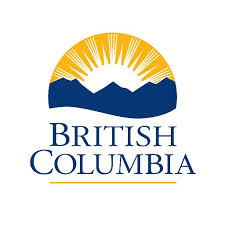Forest inventory
Type of resources
Available actions
Topics
Keywords
Contact for the resource
Provided by
Years
Formats
Representation types
Update frequencies
status
Service types
-
CREAF map server build based on MiraMon technology. Contact: contacte@miramon.uab.es. Maps produced by CREAF: Land cover, Forest Inventary points...
-

The Forest Analysis and Inventory Branch (FAIB) is responsible for coordinating and managing data collection and analyses from a range of different ground sampling programs that collect data on ground plots. This layer shows ground plots from the PSP and VRI programs. **Vegetation Resource Inventory (VRI):** ground samples primarily used to audit and verify key inventory attributes estimated during photo interpretation. These samples are not protected because they will not be revisited. **Permanent Sample Plots (PSP):** subjectively located fixed-area permanent plots, valued for their long-term re-measurement data to support development of growth-and-yield models in unmanaged stands across a range of stand and ecosystem types. Actual GPS coordinates are provided as protection is necessary. - Active PSPs = plot and buffer are protected from harvesting - Inactive PSPs = not protected from harvesting
-

__The link: *Access the data directory* is available in the section*Dataset Description Sheets; Additional Information*__. The layer of **ecological planning units (UPE) ** constitutes the territorial base at the base of the ecoforest inventory process in southern Quebec (IEQM). It was created and then integrated as part of the current inventory (fifth IEQM). It integrates concepts that are both administrative (forest region) and ecological (ecological region). More precisely, the division is done on an ecological basis within each of the forest regions. It is on this basis that the activities of the IEQM are planned. Each of the layers included in the IEQM monitoring datasets reports on what has been achieved as part of the current inventory. We are talking here about aerial photography, mapping, terrestrial sampling of temporary sample plots, and compilation activities. Each year, new territories are added to each layer to reflect the progress of the work. **This third party metadata element was translated using an automated translation tool (Amazon Translate).**
-

__The link: * Access the data directory* is available in the section*Dataset description sheets; Additional information*__. The forest maps from the first inventory are available at a scale of 1/20,000. They cover almost all of the territory south of the 52nd parallel. Each file covers an area of approximately 250 km2. These digital maps correspond to the black and white paper maps with a dimension of 125 cm X 75 cm that have been digitized and georeferenced. They illustrate forest stands. They were prepared from the photo-interpretation of aerial photos on a scale of 1/15,000. Main components: •outline of forest stands; • type of vegetation (forest species, density, height and stage of development, origin); • disturbances; • nature of the land (peatlands, gravel, etc.); • territorial subdivisions; • hydrography (lakes, rivers, streams, swamps, etc.); • transport network and bridges; • topography (level curves). The units of measurement shown on the maps in the first inventory are those of the English imperial system of measurement. **This third party metadata element was translated using an automated translation tool (Amazon Translate).**
-

__The link: *Access the data directory* is available in the section*Dataset Description Sheets; Additional Information*__. The temporary sample plot is a circular sample unit that covers an area of 400 m2 (the main unit). For each tree, we observe and measure the species, diameter, and stage in relation to other trees, as well as the defoliation and the quality of the stems of deciduous trees and certain pines. In addition, the age and height of three trees are determined. Finally, a survey of the station is carried out. Plot data also includes information about the location of the plots and the sampling plan. These data are acquired as part of the **second forest inventory in southern Québec.** They were used in particular to produce forest compilation results used to feed the calculation of forest opportunities in public forests in Quebec. The establishment of these plots took place between 1980 and 1993. This database covers almost all of the territory south of the 52nd parallel of Quebec's public and private forest. **This third party metadata element was translated using an automated translation tool (Amazon Translate).**
-

__The link: *Access the data directory* is available in the section*Dataset Description Sheets; Additional Information*__. **The forest maps in the second inventory** are available at a scale of 1/20,000. They cover almost all of the territory south of the 52nd parallel. Each file covers an area of approximately 250 km2. These digital cards correspond to the black and white paper cards with a dimension of 125 cm X 75 cm that have been scanned. They illustrate forest stands. They were prepared from the photo-interpretation of aerial photos on a scale of 1/15,000. Main components: * outline of forest stands; * sub-groupings of species in all stands; * type of vegetation (forest species, density, height and stage of development, origin); * age class; * disturbances; * nature of the land (peatlands, gravel, etc.); * territorial subdivisions; * hydrography; * transport network and bridges; * topography (level curves); * slope classes; * defoliation class.**This third party metadata element was translated using an automated translation tool (Amazon Translate).**
-

__The link: *Access the data directory* is available in the section*Dataset Description Sheets; Additional Information*__. Satellite image mosaics are products designed by combining several adjacent tiles of satellite images from the **Landsat or Sentinel** sensor. The coverage of the mosaics varies according to the years of acquisition, ranging from southern Quebec to all of Quebec. These mosaics are designed to identify land use classes, including forest environments, agricultural environments, wetlands, and environments modified by humans. They also offer an overview of the various natural disturbances that occur on the territory. In the end, they offer easy monitoring of the evolution of forest cover and natural disturbances across territory and time. These mosaics are primarily used to support planning, monitoring, and land use planning. The mosaics have a spatial resolution of between **10 and 30 meters**. **This third party metadata element was translated using an automated translation tool (Amazon Translate).**
-

TOPEX (acronym which means “topographical exposure”) is an index of topographic exposure. It reflects the influence of local topography on the degree of exposure to wind and on its behavior (Ruel et al. 2002). TOPEX data are presented in the form of a matrix file (raster) whose spatial resolution is 50 m with a projection in Nad 1983 Quebec Lambert. This raster covers the entire territory of Quebec located approximately south of 52°40' and west of 61°10' and extends beyond the borders of Quebec by 75 to 125 m (in order to have values on the entire Quebec territory covered). TOPEX values were calculated using the Digital Terrain Model (DTM) from the NASA Shuttle Radar Topography Mission (SRTM). This MNT is provided in a WGS 84 projection (EPSG: 4326) with a resolution of one arcsecond (+/- 30 m). A mosaic of the SRTM tiles was created to then project the MNT into Lambert and resample it at 50 m. TOPEX can be used as an input in a windfall vulnerability assessment system. However, it should be borne in mind that this index does not take into account the wind channeling effect that may occur in certain places and that can influence windfall. In addition, other factors must be taken into consideration in order to carry out a complete analysis of the risk of windfall. RUEL, J.-C., S. J. MITCHELL and M. DORNIER, 2002. A GIS based approach to map wind exposure for windthrow hazard rating. Northern Journal of Applied Forestry, 19 (4): 183-187. **This third party metadata element was translated using an automated translation tool (Amazon Translate).**
 Arctic SDI catalogue
Arctic SDI catalogue